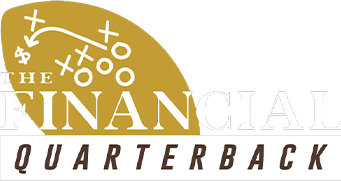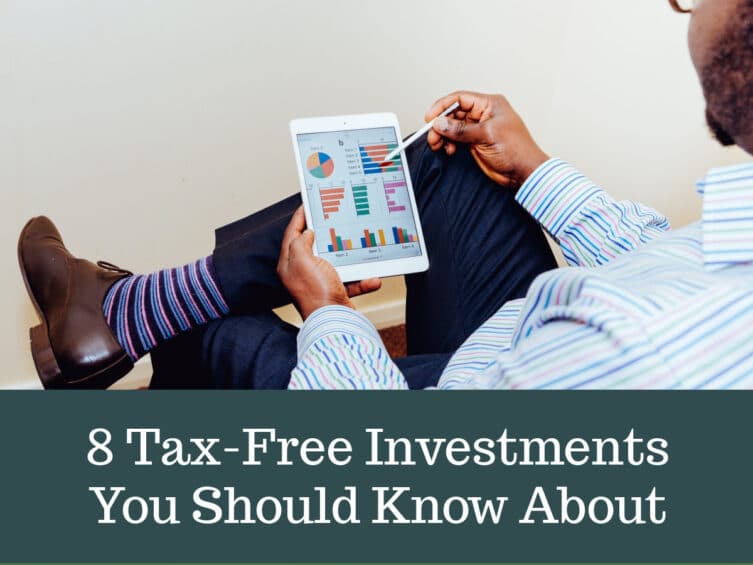“Nothing is certain except death and taxes.” Benjamin Franklin was certainly right about a lot of things over his lifetime. And it absolutely feels like taxes are unavoidable, but are they really? Well, no! There are certain investment types that are completely tax-free.
While you probably shouldn’t be too concerned with dropping the amount of taxes you pay each year down to zero, understanding how your investments can impact your taxes and using that to your advantage is a great way to maximize your money.
Tax-Efficiency vs. Tax-Free Investments
When it comes to getting the most out of your investment, sometimes it comes down to “tax efficiency” over finding completely tax-free investments.
Tax-deferred investments allow you to reduce your taxes now, but you end up paying taxes on your returns later. This can be especially useful if you are in a high tax bracket currently, and believe that you’ll be taxed at a lower rate in the future.
Conversely, many investments that are considered tax-free happen to be made with after-tax dollars. This means you are still paying taxes on the initial investment. However, your returns will not be taxed. So if you think you’ll be in a higher tax bracket later in life, these would be the investments you want to look at.
And while they are rare, there are some investments that have triple tax benefits. These investments reduce your tax liability today, the money grows tax-free over time, and you don’t have to pay taxes when you withdraw money from the account.
Here are several different types of tax-free investments that you should know about.
Tax-Free Investments
1. Municipal Bonds
Municipal bonds, sometimes called “munis”, are debt securities that are sold by a government entity; usually either a city, county, or state. The money raised from selling the municipal bonds typically will go to paving new roads, building schools, and other large projects or even day-to-day obligations.
When you buy a municipal bond, essentially you are lending your money to the entity who issued the bond. In exchange, you’ll receive regular interest payments plus the cost of your initial investment once the bond has reached its maturity date.
Any interest you collect on municipal bonds will usually be exempt from your federal income tax. The interest could also potentially be exempt from any state and local taxes, depending on the state you reside in and the state where the municipal bonds were purchased. (Florida is one of nine states that doesn’t have a personal income tax.)
2. Tax-Exempt Mutual Funds
Technically, a mutual fund is a type of investment company. However, more often than not, when you see or hear the term “mutual fund,” it is actually referring to that company’s portfolio of investments.
Mutual funds are popular with so-called retail investors because they allow for many investors to pool their money together, increasing their buying power. When you invest in a mutual fund, a portion of that investment can then be used by the company to purchase stocks, bonds, or even short-term debt securities.
Tax-exempt mutual funds typically are comprised mainly of municipal bonds, and the interest earned on those bonds are exempt from federal income tax, and possibly even state and local taxes.
Munis have a very low risk, which means you’ll see a lower rate of return compared with higher risk investments. However, some mutual funds will invest in Treasury bonds (T-bonds) which could still be subject to federal income tax.
Be aware that only the interest earned on those bonds may be tax-free. If you were to sell your mutual fund and there is appreciation in value, your gains would be taxed at a capital gains rate.
3. Tax-Exempt ETFs
An ETF, or Exchange Traded Fund, can be bought or sold just like a regular stock.
However, you’re not actually gaining ownership over a security like you would if you were purchasing stock. Rather, the ETF is a type of security that aims to track certain elements of the market.
ETFs are a popular choice for individuals looking to diversify their portfolio, because the ETF itself can hold multiple assets. ETFs can be made up of stocks, bonds, commodities, and even currency.
A tax-exempt ETF will usually end up being composed of municipal bond funds, which we’ve already established allow you to collect regular interest payments that are exempt from the federal income tax. In addition, just like the tax-exempt mutual fund, if you were to sell the ETF at a price higher than what you purchased it, you would incur a capital gains tax.
4. Cash Value Life Insurance
Life insurance is a seemingly simple concept: after you pass away, your insurance policy pays a lump sum of money to your beneficiaries. There are many different types of life insurance policies.
One of type of life insurance policy is called a Cash Value Life Insurance. These policies are also called Whole Life, Universal Life, Variable Universal Life, Variable Life, or Indexed Universal Life. All of these are somewhat different, although the concept is the same.
They can all be designed as an investment vehicle which will allow the investor to purchase a combination of life insurance and investment in one place. As long as you pay your premiums, your policy will pay out a benefit at the time of your death. But there’s also a cash value component, which can increase in value and provide tax-free distributions during your lifetime.
A properly structured plan can provide one of the most flexible and powerful investment vehicles out there. However, this investment tool, although available to everyone, is not for everyone. An investor wanting to use a life insurance contract for tax free accumulation and distribution must be healthy enough to successfully get life insurance.
In addition, due to the cost of insurance and internal fees, they must be also able to fund it in a manner that will allow the cash value to grow over time.
5. Roth IRA
There are two types of IRAs, or Individual Retirement Accounts. There’s the traditional IRA, and a Roth IRA. These two types of IRAs are very similar, with the main difference being when your money is taxed.
With a traditional IRA, contributions happen pre-tax, meaning you’ll save money on your taxes upfront but have to pay taxes when you withdraw funds from the account during your retirement.
Roth IRA contributions happen after-tax. So you’ll still pay income tax on the money that gets deposited into a Roth IRA account, but all of the money that you withdraw during your retirement will be completely tax free.
6. Roth 401(k)
Just like with traditional IRAs and Roth IRAs, the biggest difference between a traditional 401(k) and a Roth 401(k) is when the money is taxed.
Contributions to a traditional 401(k) account happen pre-tax, but you’ll end up paying tax when you pull money out of the account. A Roth 401(k) features after-tax contributions. You pay taxes on the money up front, but then your qualified distributions will be tax-free.
7. Health Savings Account
A Health Savings Account (HSA) is designed for individuals who have a high-deductible health plan, no other health coverage, and are not enrolled in Medicare.
While many other accounts referenced in this article have the option of either paying taxes up front or when they withdraw funds, an HSA allows for both contributions and withdrawals to be completely tax-free.
However, even if you are eligible to open up an HSA, there are limits to how much you can contribute each year without paying a tax penalty, and your withdrawals are only tax-free if used on qualified medical expenses. Distributions used for anything else not only will count towards your income tax, but will also carry an additional 20% penalty if you are under the age of 65!
8. 529 College Savings Plan
A 529 plan is a way for parents and family members to invest in their child’s education, with the most common use going towards paying for college.
These 529 plans often work very similarly to a Roth IRA or Roth 401(k): contributions are made after-tax, and the investments can be withdrawn tax-free when used to pay for qualified education expenses.
The trick is in finding the 529 plan that is right for you and your family. Nearly every state has a 529 plan, but you are not required to use your home state’s plan. For example, a Florida resident can invest in a 529 plan in New York and send their child off to college in California.
Get the Most Out of Your Investments
Utilizing a variety of tax-free investments can be a powerful tool to maximizing your money. But there are some drawbacks.
Some of these investments carry lower risk, and hence a lower return. The money you saved by not paying taxes might not make up for the reduced return compared to a riskier investment that you have to pay taxes on. Or you might be limited on how you can use the funds without having to pay taxes, and risk paying an additional penalty if you need to access that money for other reasons.
Having too narrow a focus on paying less taxes could blind you to some other great investment opportunities. Luckily, a financial advisor can help you get the most out of your assets by looking at your entire portfolio and giving you advice catered specifically to your resources, lifestyle, risk profile, and goals.




